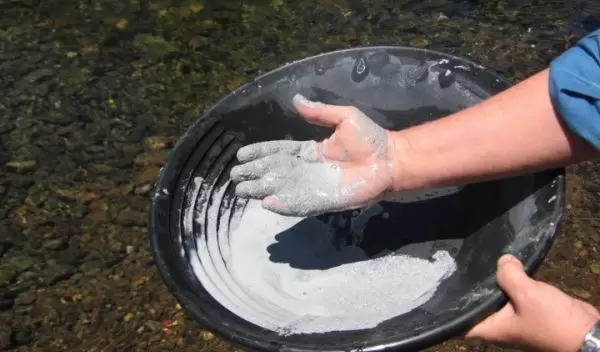
Clay fights MRSA, other 'superbugs' in wounds
The use of mud or wet clay as a topical skin treatment, or poultice, is a common practice in many cultures. In fact, the concept of using mud as medicine goes back to the earliest times.
Now, Arizona State University (ASU) and Mayo Clinic researchers have found that one type of clay, Oregon blue clay, may help fight disease-causing bacteria in wounds, including treatment-resistant bacteria. Their findings appear in the International Journal of Antimicrobial Agents.
"The study is an important advance in understanding how clays, specifically blue clay from Oregon, have shown medicinal properties by attaching to pathogenic bacteria," says Enriqueta Barrera, a program director in the National Science Foundation's (NSF) Division of Earth Sciences, which funded the research.
The scientists identified certain clays that kill bacteria, including many drug-resistant pathogens.
"Working with Mayo Clinic, we showed that these clays also diminish populations of bacterial biofilms, as well as bacteria common in wounds that are more resistant to drugs," says biogeochemist Lynda Williams of ASU, a co-author of the study. "The results support our efforts to design new antibacterial drugs using natural clays."
Biofilms occur when bacteria attach to surfaces and develop a film or protective coating, making them relatively resistant to antibiotics. The biofilms appear in two-thirds of the infections seen by health care providers.
"We showed, however, that this reduced iron-bearing clay can kill some strains of bacteria under the laboratory conditions used, including bacteria grown as biofilms, which can be particularly challenging to treat," says Robin Patel, an infectious disease physician and clinical microbiologist at the Mayo Clinic, and lead author of the study.
In laboratory tests, the researchers found that the clay has antibacterial effects against bacteria such as Escherichia coli and Staphylococcus aureus, including strains such as carbapenem-resistant Enterobacteriaceae and methicillin-resistant Staphylococcus aureus (MRSA).
The clay suspension was effective against several bacteria in their biofilm states.
The research is preliminary, and the scientists caution that only one concentration of the clay suspension was tested. They also say that not all types of clay are beneficial.
The lab tests are a step in simulating the complex environment of an infected wound. More research is needed to identify and reproduce the properties of clays that are antibacterial, with the goal of synthesizing a consistent compound of the clay minerals under quality control.
Others on the research team include Katherine Caflisch, Suzannah Schmidt-Malan, Jay Mandrekar, Melissa Karau and Jonathan Nicklas, all with the Mayo Clinic.


